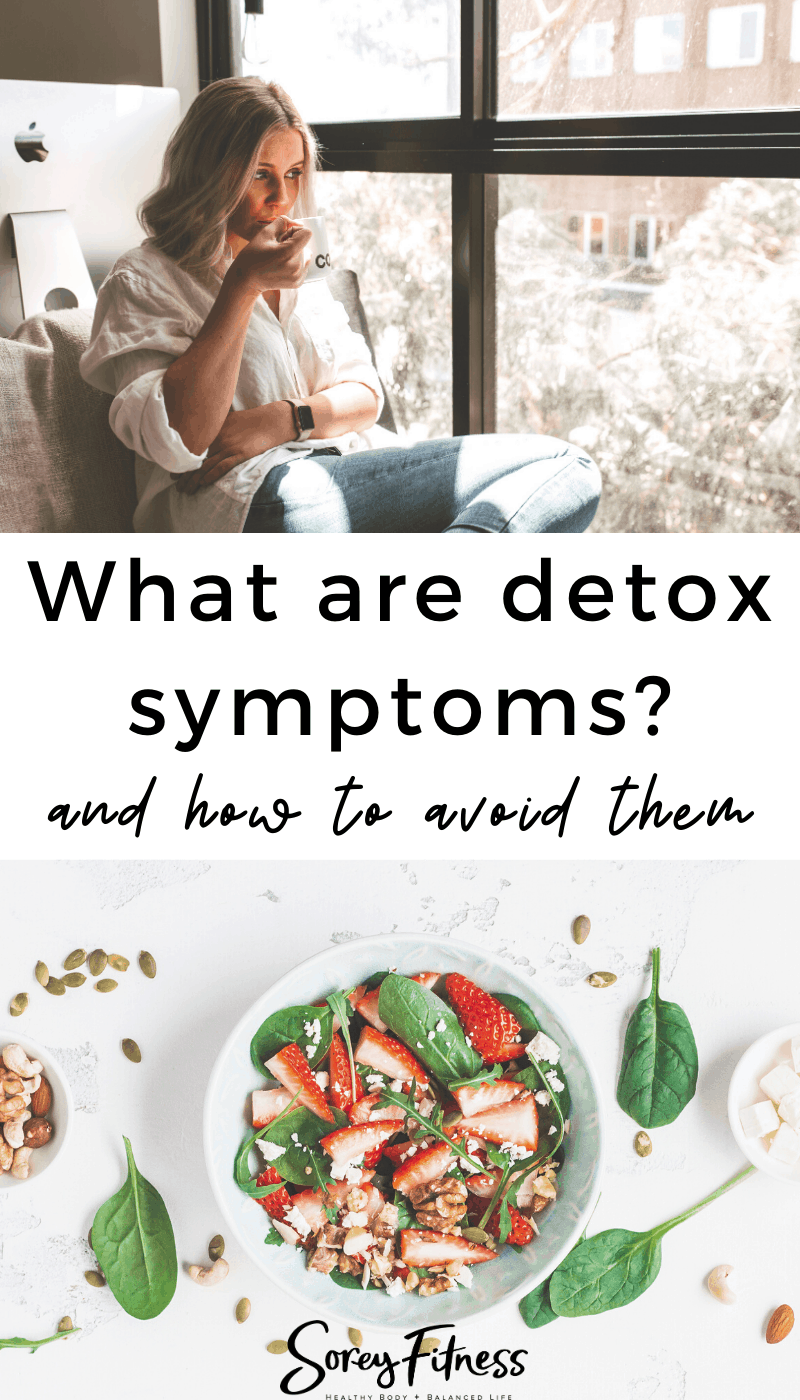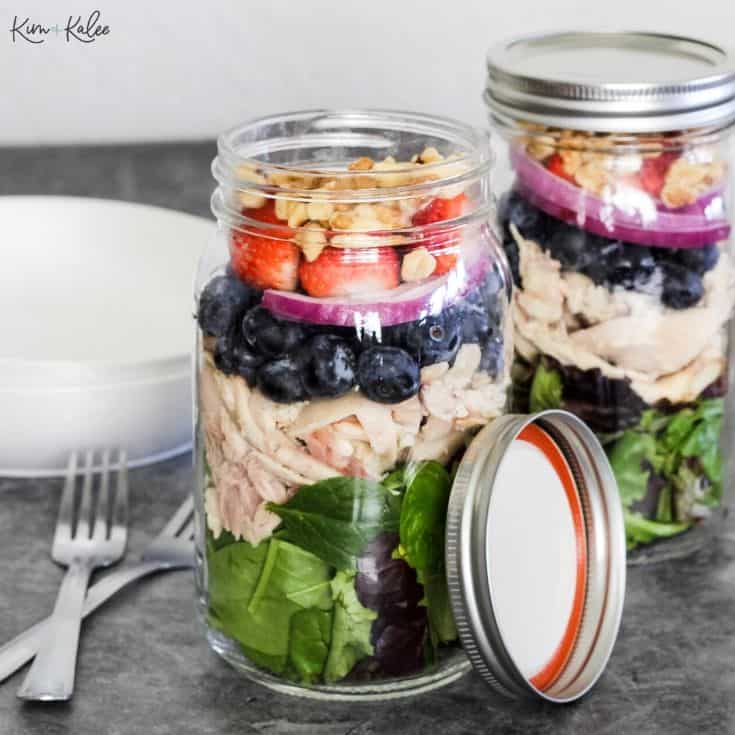What are Detox Symptoms? (& 5 Tricks to Alleviate Diet Detox Symptoms)
This post may contain affiliate links. All opinions shared are my own. As an Amazon Associate I earn from qualifying purchases. Click to view our full disclosure.
All content is created by humans – not AI.
If you’re cutting back on unhealthy foods and working on improving your diet, you might experience detox symptoms or withdrawal-type symptoms from eliminating certain foods. We take a look at why detox symptoms happen and how to alleviate them.

Does this sound familiar? You found a new diet to try that eliminates a bunch of unhealthy foods and some food groups you’re used to eating regularly. You’re excited to try this new diet, so you jump in with both feet.
A few days later (or even a week or 2 later) you start experiencing headaches, irritability, mood swings, and more. What gives?
While we often expect to feel better with all those new healthy foods we’re eating, sometimes our body doesn’t like that we’ve changed things drastically, and we end up with withdrawal or detox symptoms from eliminating certain foods that it’s used to having regularly.
We’re going to explore what detox symptoms look like, why our bodies go into withdrawal from things like caffeine and sugar, and ways to alleviate detox symptoms.
What are detox symptoms?
Thanks to television, most of us know what it looks like for someone to go through detox from drugs or alcohol. But what does it look like for someone to go through “detox” from cutting out certain foods?
Detox or withdrawal symptoms from food is a bit less researched than withdrawal symptoms from substances and stimulants like caffeine. Common withdrawal symptoms from caffeine include:
- Headaches
- Fatigue
- Irritability
- Depressed moods
- Difficulty concentrating
- Sleepiness and yawning

Symptoms from eliminating foods such as sugar are a little harder to pin down but can be the same as those listed above for caffeine. Sugar addiction and food addiction has been a controversial topic in recent years, but some studies suggest that sugar addiction does exist due to sugar’s impact on dopamine levels and brain activity.
One study done in 2011 suggests that sugar and drugs share similar neurological pathways in the brain and that cravings, tolerance, and withdrawal symptoms have been noted in studies.
What does that mean? Breaking up with things we’ve consumed regularly (like sugar and caffeine) can be hard to do and may result in some withdrawal or detox symptoms.
Why do we have withdrawal from certain foods?
When we eliminate substances like caffeine, we’re dealing directly with neurotransmitters in our brain. If you increase caffeine intake, your brain produces more adenosine receptors to handle the caffeine (caffeine and adenosine compete for the same receptors). Your body and brain adapt, so you increase your caffeine intake to get the same effects, and the cycle starts over.
So, when you accidentally miss your coffee or decide to cut back on caffeine, your body expects your daily dose and begins to go through withdrawal when it’s not there (headaches, fatigue, etc.).
When we cut back on sugar, something similar happens since sugar often taps into our pleasure and reward centers in our brain. Our body anticipates the elevation of dopamine and endorphins we can get from sugary treats and we can experience some unpleasant symptoms when it’s not delivered when we have trained our body to expect it.

Keeping our bodies healthy by making sure we’re consuming moderate amounts of things like sugar and caffeine is crucial. So how do we deal with unpleasant withdrawal symptoms that often come with cleaning up our diets?
How to Alleviate Detox Symptoms When Changing Your Diet
If you’re working on eating healthier and reducing the amount of sugar, junk food, or caffeine you’re consuming, then you’ll probably experience some uncomfortable withdrawal-type symptoms that come with those changes in habit and diet.
Here are a few ways to alleviate those detox symptoms when you’re cutting back on unhealthy foods and drinks.
1. Eliminate certain foods gradually and with a plan
One way to alleviate potential withdrawal symptoms is to plan out a course of action for eliminating or reducing that food or substance gradually.
For example, if you’re trying to reduce your caffeine intake, choose a 2 week period that will be low stress, and you’re able to get the recommended amount of sleep. Caffeine withdrawal can cause headaches and fatigue, so picking an easy 2 week period is important.
Tally your daily caffeine intake and aim to reduce 1 drink each day for the first week. So if you normally have 4 caffeinated drinks each day, drop it to 3 drinks each day during week 1. The second week, reduce caffeine by another drink that week, and so forth until you reach your goal.
You can try this same approach with sugar as well. If you usually have donuts and candy each day, cut it back to 1 donut instead of 2 for the first week. Start where you are and find ways to gradually reduce the sugar. This helps to reduce your cravings and feelings of withdrawal while still improving your diet.
Creating a plan for reducing intake is key!

2. Avoid extreme diets
One of the best ways to prevent those headaches and mood swings from eliminating foods cold turkey is by avoiding diet extremes and focusing on a balanced diet, making sure that you’re meeting all of your nutritional needs through mostly your diet.
Unless you have certain medical needs that require you to adhere to a super strict diet, stick to a well-rounded diet with a variety of foods. That helps to ensure that you are meeting your body’s requirements for nutrients while still eating healthy foods and not eliminating entire food groups.
Try following an 80/20 diet or a 90/10 diet: you eat healthy foods 80% of the time (or 90%) and indulge 20% of the time (or 10% if you’re following the 90/10 plan). This means the foundation of your diet will be nutrient-dense and healthy foods to fuel your body, and occasional treats that you can still enjoy.
3. Stay active
When you’re working on improving your diet and cutting back on unhealthy foods, make sure that you maximize your effort by staying active. Optimal health is a balance of many things including good mental health, eating nutritiously, and regular exercise.

Just make sure that you’re not committing to any crazy hard workouts during the weeks that you are trying to eliminate certain foods from your diet! Reducing stress improves your willpower and decision making skills, so stick with moderate workouts during those weeks you are cutting back on unhealthy foods.
If you’re short on time or don’t have a gym membership, you can workout at home with Beachbody On Demand. Their library of over 700 workouts includes yoga for those days you need to destress from cutting back on sugar or caffeine!
4. Decrease your stress levels
As I mentioned above, having high stress levels along with the physiological and mental stress of reducing certain foods can make it very difficult to focus on eating better.
Decrease your stress levels as much as possible and set aside time to get enough sleep to help offset the additional fatigue that often accompanies sugar or caffeine detox symptoms.

5. Meet all of your nutritional needs
When you’re feeling crummy from cutting back on sugar, make sure that you’re meeting all of your nutritional needs, like eating enough healthy fats, lean proteins, and plenty of vegetables.
Keeping tabs on your vitamin and mineral intake through your diet and possibly supplements (as long as you’ve cleared them with your doctor or dietitian) will help your body function optimally even when you’re cutting back on sugar or caffeine.
This also applies to the number of calories you’re eating each day. If you’re not eating enough calories for your gender and activity level, then you’ll feel poorly even if you weren’t cutting out certain foods.
Check out the ACE Fitness calorie calculator for a good science-based way to estimate your personal calorie needs.

Sarah Jane Parker is a food and healthy living blogger at The Fit Cookie, an ACSM Certified Personal Trainer, ACE Certified Health Coach, Revolution Running certified running coach, YogaFit Level 1 certified yoga instructor, and an ACE Certified Fitness Nutrition Specialist.




